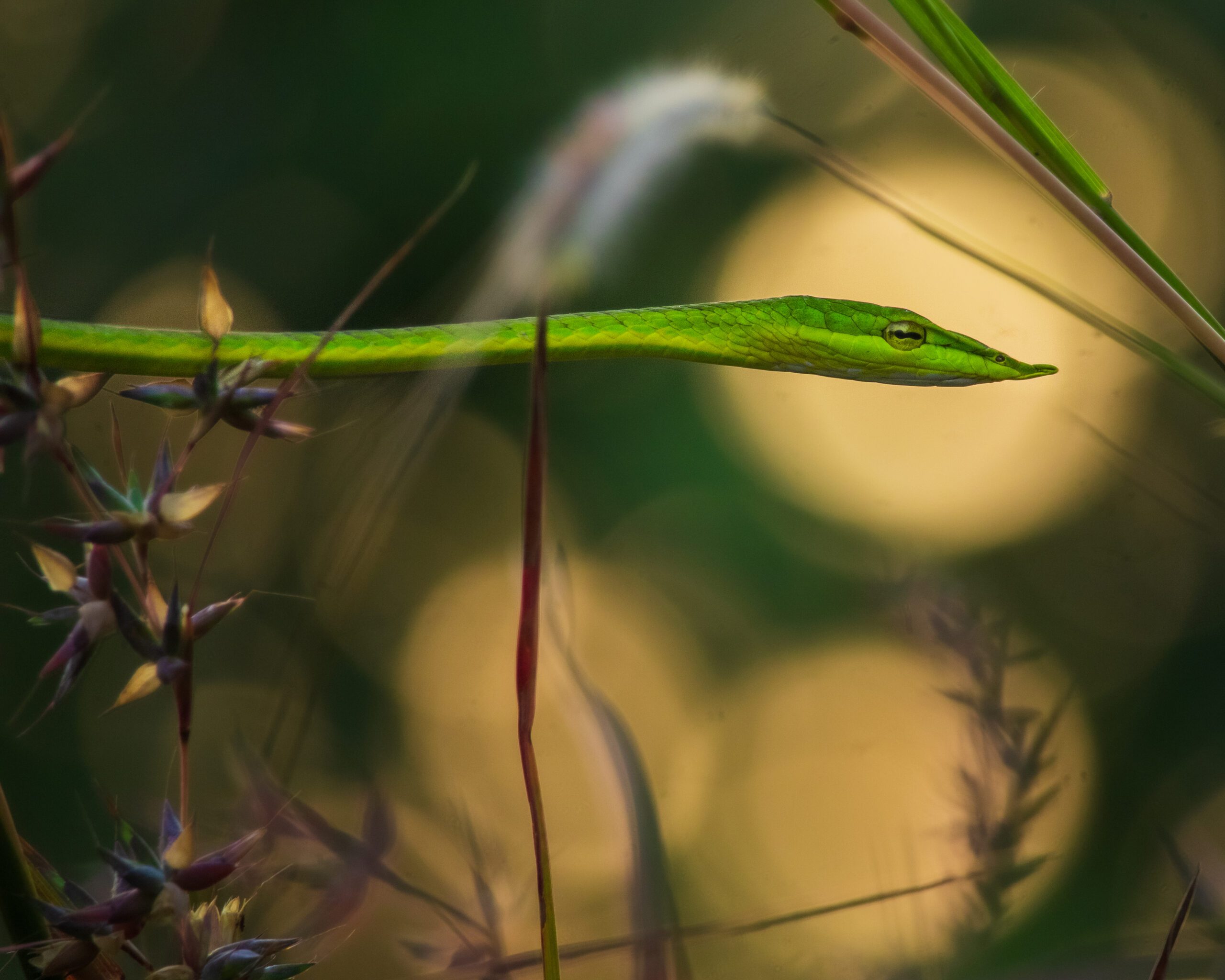Snakes are mysterious being often misunderstood. We helped you debunk 10 Top Myths About Snakes In India in our earlier blog post. We would now like to take you through a detailed overview on snakes. Details that will give you a broader idea about this one-of-its-kind species.
For few of us, snakes are fascinating creatures, but for the rest, they are slithering, crawling, dangerous beings. It is very interesting to understand why few of us love snakes, while a few can’t seem to come to terms with them, and we loathe them. This is due to the fact that we are afraid of snakes as we don’t know much about them, and have grown up to stories that describe them as menacing.
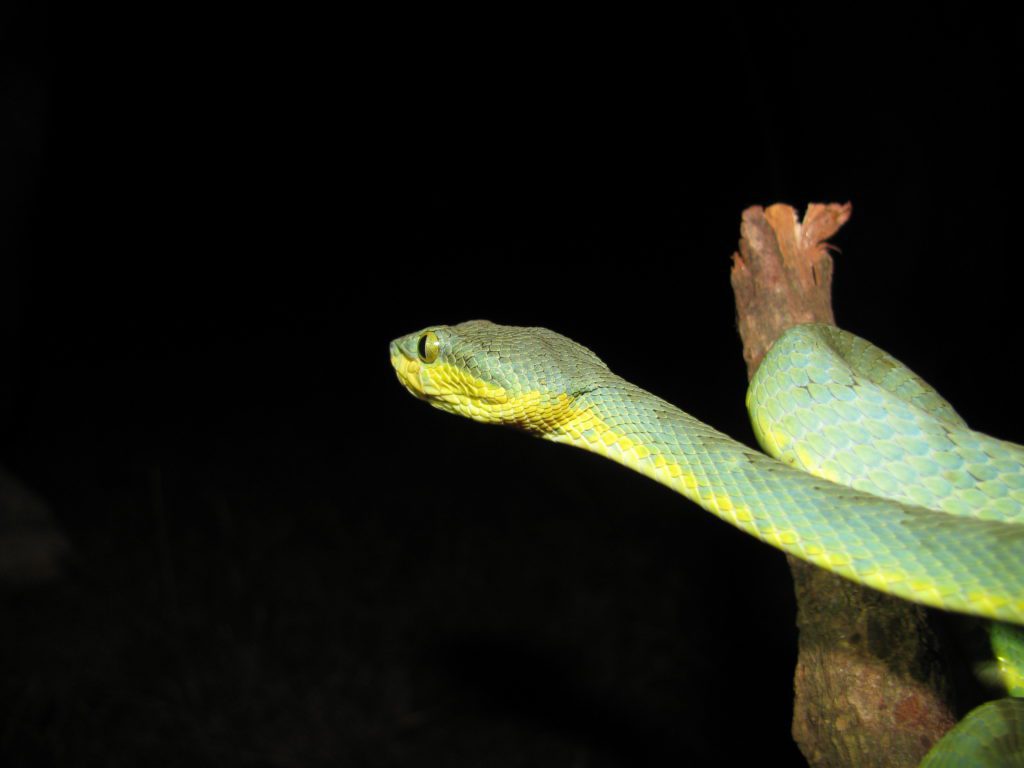
You will be surprised to know that the world of snakes is a very interesting one. Let’s delve a bit deeper into this world.
Snakes evolved even before the origin of mammals. And reptiles were one of the first predators the mammals faced.
We have different words for the snakes in different languages, for example:
Sanskrit: Sarp (सर्प), Sarisrupa (सरीसृप), Vishdhar (विषधर), Bhujanga (भुजङ्ग), Ahi (अहि), etc.
Hindi: Saap (साँप), Bhujanga (भुजंग), etc.
Spanish: Serpiente, etc.

Introduction to Snakes: Basic Evolution and Taxonomy
Evolution of Snakes:
As per the scientists and fossil records, snakes have been slithering on the earth for more than 100 million years. These creatures have evolved from lizards. And the remains of the hind limbs can be seen in some snakes such as pythons.

Titanoboa cerrejonensis were pre-historic true snakes who roamed on the earth around 50 to 70 million years ago. As a result of extraordinary use of modern technology with fossil records, we now know that Titanboa cerrejonensis was similar to boa-constrictors of the modern day but was very enormous in size. The length was more than 40 feet and weighing more than a ton.
Taxonomy of Snakes :
As a result of use of developing technologies in science, scientists have an interesting taxonomy for snakes. Taxonomy is the branch of science which deals with the classification of species based on the different characterstics. Based on Carl Linnaeus classification system, snakes have been classified in the following main groups based on some characters:
Kingdom: Animalia (as they are free moving and multicellular organism)
Phylum: Chordata (due to presence of notochord, a cartilaginous skeletal rod supporting the body)
Class: Reptilia (as they are cold-blooded, creeping and burrowing species with scales on their body)
Understanding basic of taxonomy of snakes helps us understand them better.
More than 3,400 species of snakes in the world have been classified with more than 25 families with a set of particular characters related to that group, such as DNA coding, scale count, anatomy, etc. Further they have been classified in sub-family, family, genera, species, subspecies etc. Snakes are present in the most parts of the world, except few places like Antarctica, New Zealand, Ireland, etc.
Besides the scientific classification, snakes have been differentiated in two groups for the lay person:
Venomous and Non-venomous snakes
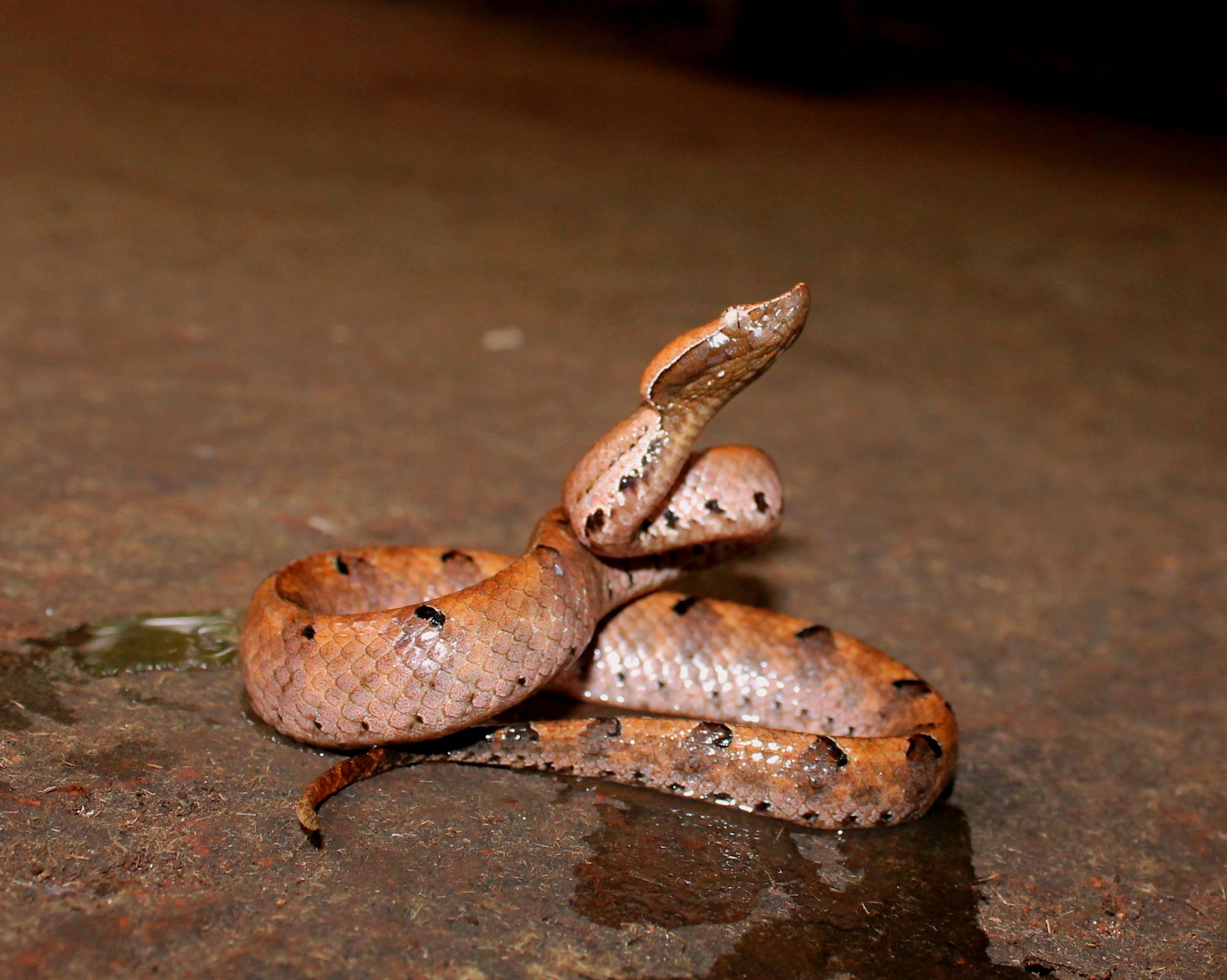
Snakes in India: Overview and Diversity
Being a very large and diverse country, India is home to more than 350 species of snakes. This number is increasing constantly as a result of new discoveries.
For example, in last few months we have an addition of 4 new species of snakes namely – Thackeray’s Cat Snake (Boiga Thackerayi) from Koyana Wildlife Sanctuary, Anamalai Wood Snake (Xylophis mosaics) from Eravikulam National Park, Slender snake species (Trachischium apteii) from Tally Valley Wildlife Sanctuary, and Salazar’s pit viper (Trimeresurus Salazar) from Pakke Tiger Reserve.
Of all the snakes in India, only 15% to 17% are venomous including sea snakes.
Due to vast diversity, the largest snake that we get in our country is Reticulated Python which can grow more than 25 feet. While King Cobra is the longest venomous snake in the world which can grow up to 20 feet and the smallest one is Brahminy Blind Snake with average length of 10 centimetres.
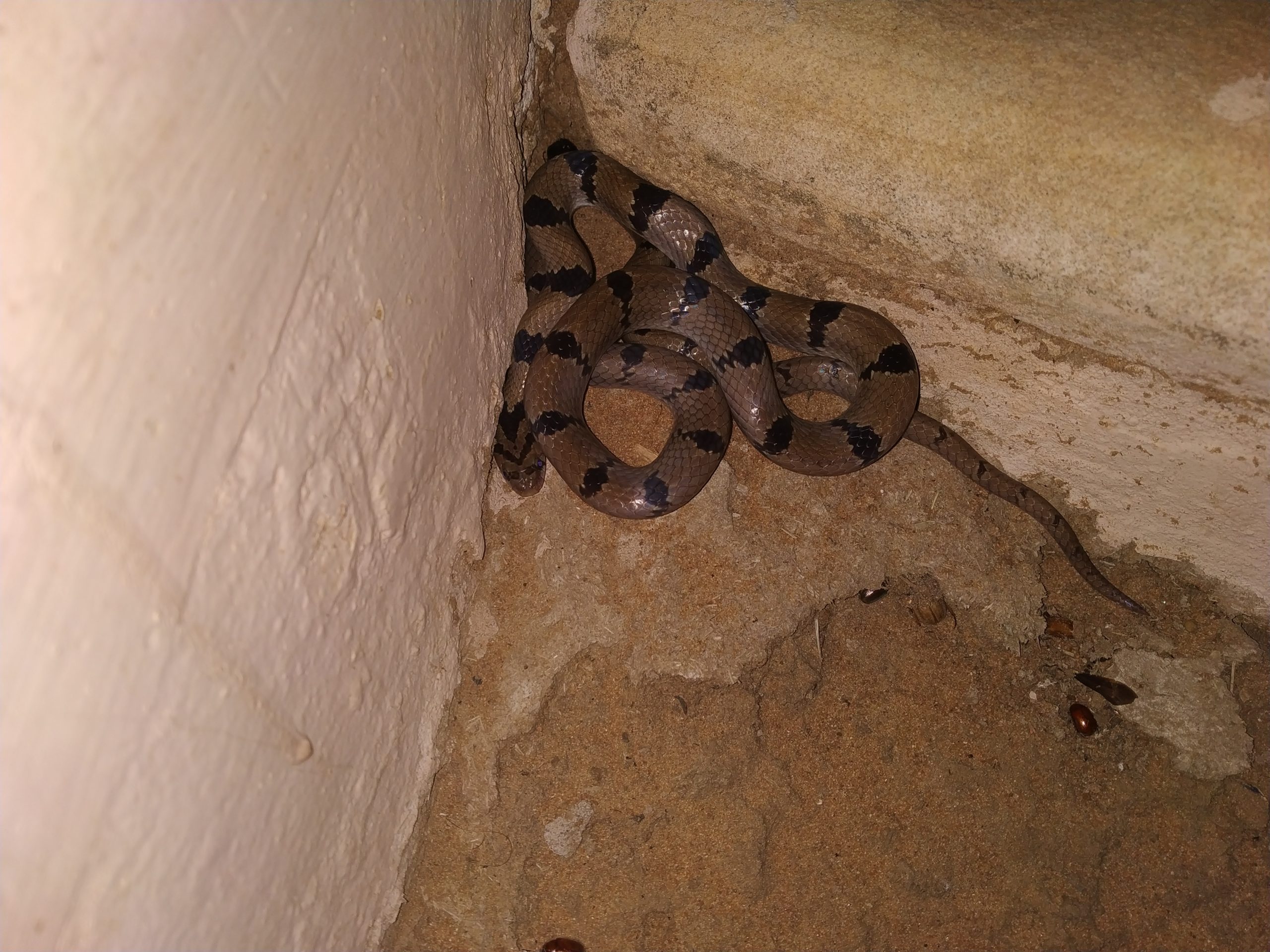
Common Snakes in India:
Common snakes which we find in India, vary as per the region. Few of them are listed as follows:
1. Rat Snake (Ptyas mucosa):
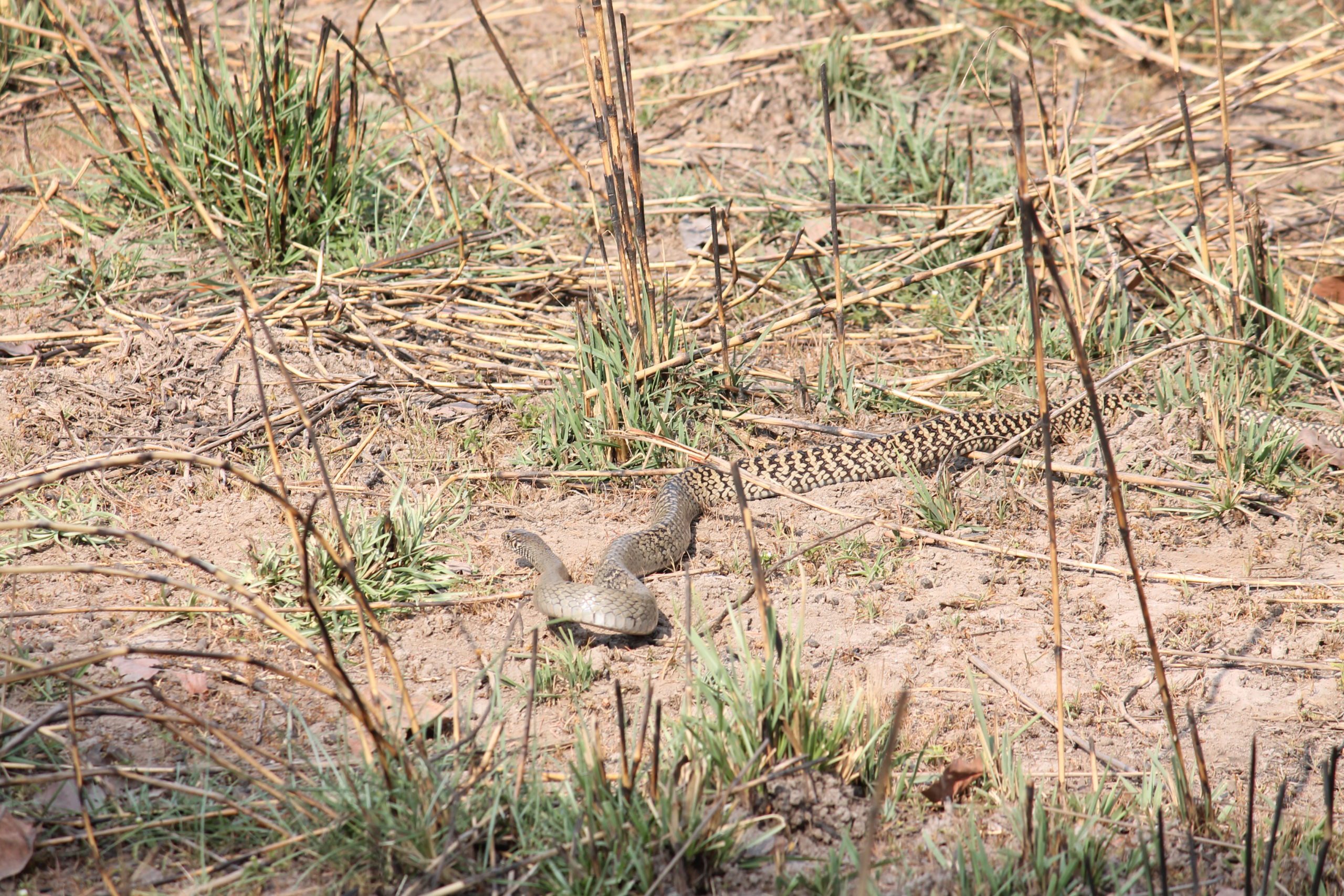
In Greek Ptyas means spitter and mucosa means slimy. The snake got this name because of the notion that snakes are slimy. Snakes are not slimy. Rat snakes particularly are related to symbol of medicine caduceus and Rod of Asclepius.
Rat snakes are famous for their crawling speed and large size. Very good climbers, as well as swimmers; rat snakes are are a farmer’s friend, as they help control the rodent population from destroying the crops. Rat snakes in turn, are the favourite meal of king cobras!
In India, till date 14 different colour morphs of this snake have been recorded and their colour various from black, red, brown, yellow, gray etc. In Central India, prominent one are yellow and brown.
In Denwa Backwater Escape, our jungle lodge we have seen both yellow and brown morphs of rat snake.
2. Indian Rock Python (Python molurus):
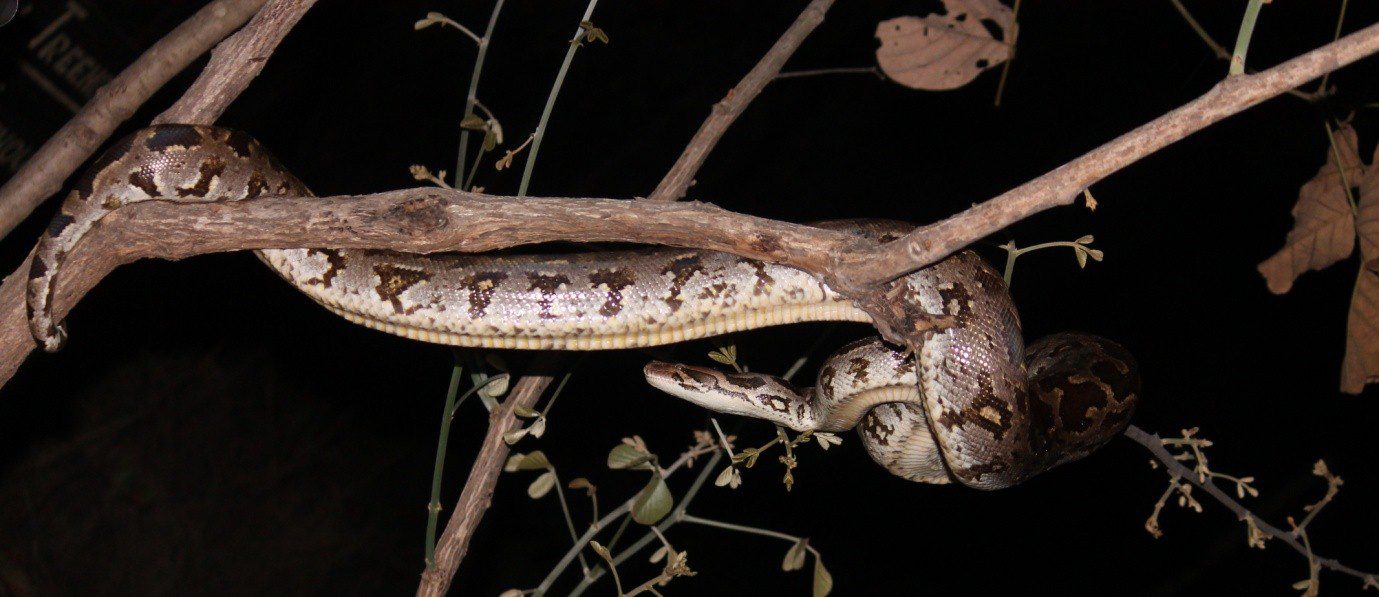
We don’t know how exactly this name came up, but in Greek; python means serpent and molurus means some kind of snake. Indian Rock Python is one of the heaviest and longest snakes found in the country. As per authenticated record they can grow more than 9 meters (about 30 feet). Despite being common in most part of the country, it is difficult to see them in the wild.
They are mainly nocturnal and equipped with thermal sensing pits on their jaws. Despite being heavy they are highly arboreal snakes. They belong to group commonly known as boa constrictor. And they kill their prey by asphyxiation or cutting off the blood supply by coiling around the prey’s body. This causes cardiac arrest and instant death.
3. Common Indian Wolf Snake (Lycodon aulicus):
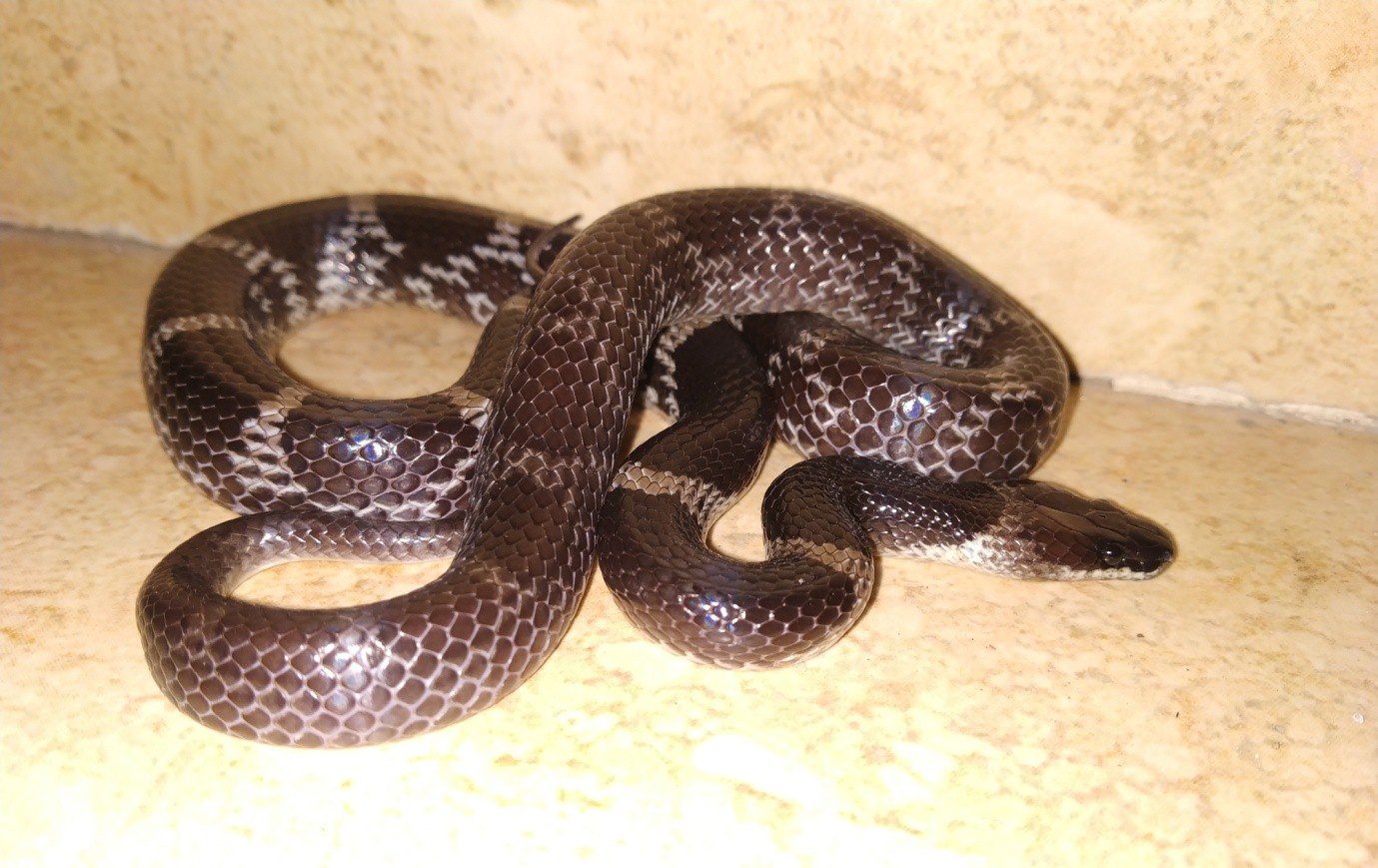
Lycodon is derived from two Greek words ‘lykos’ meaning wolf and ‘odon’ meaning tooth, and it refers to dental arrangement of the snake.
A fun fact – the hind teeth of this snake are similar to those of the canines of a wolf, therefore the name!
It is another common snake species found in the country. Mainly nocturnal, they mimic Kraits in many ways and often get killed because of the resemblance. They are very good climbers, and their favorite foods are lizards and geckos. Most of the specimens have a short temperament, and they repeatedly bite after handling. If not disturbed, they can stay in the same place for many days. There are many facts about snakes that can surprise you.
4. Checkered Keelback (Fowlea piscator):
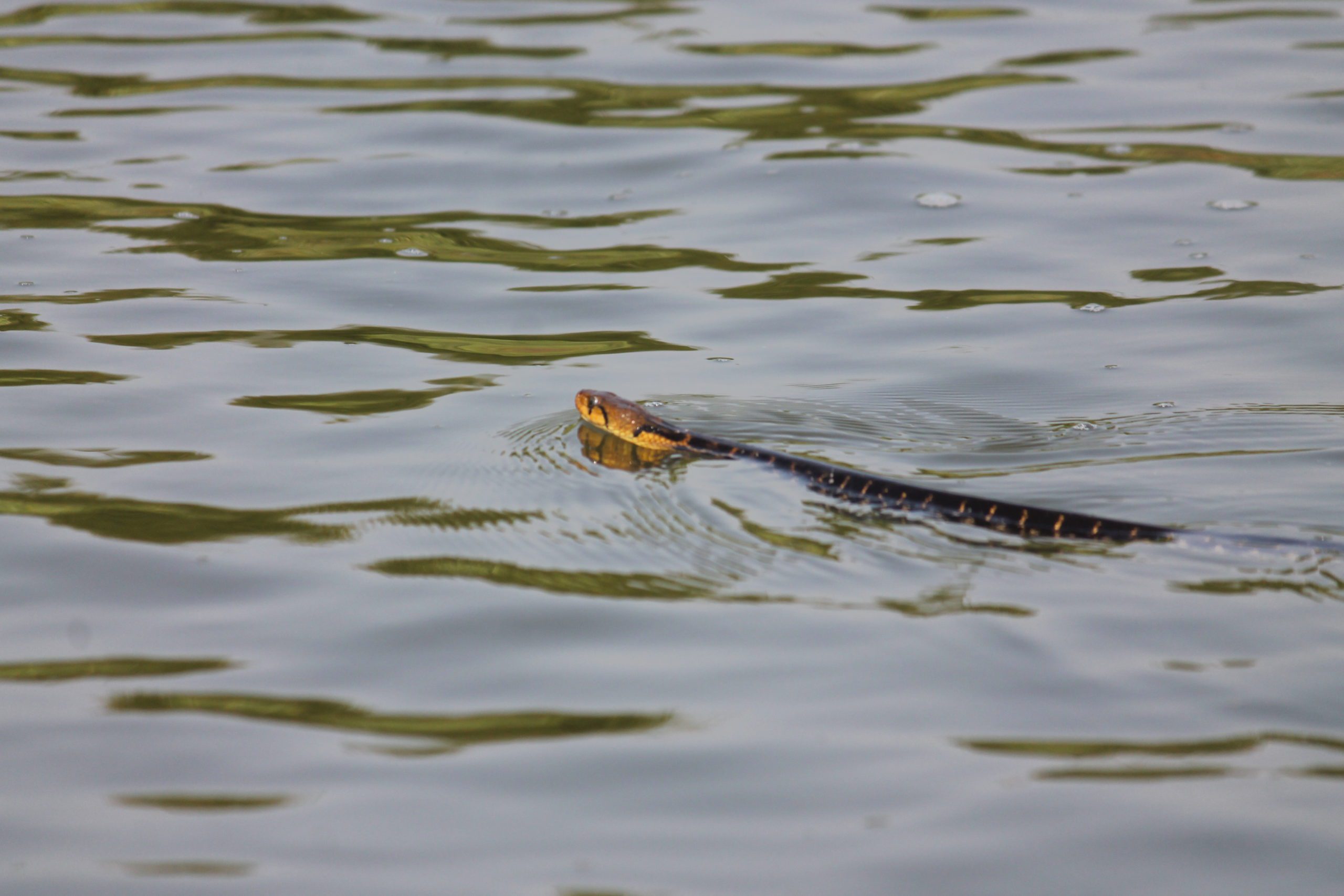
In Latin piscator means fisherman. This snake got this name because of fish eating habit. The English name ‘Checkered Keelback’ refers to the square shape marking of different colour on keeled scales of upper body.
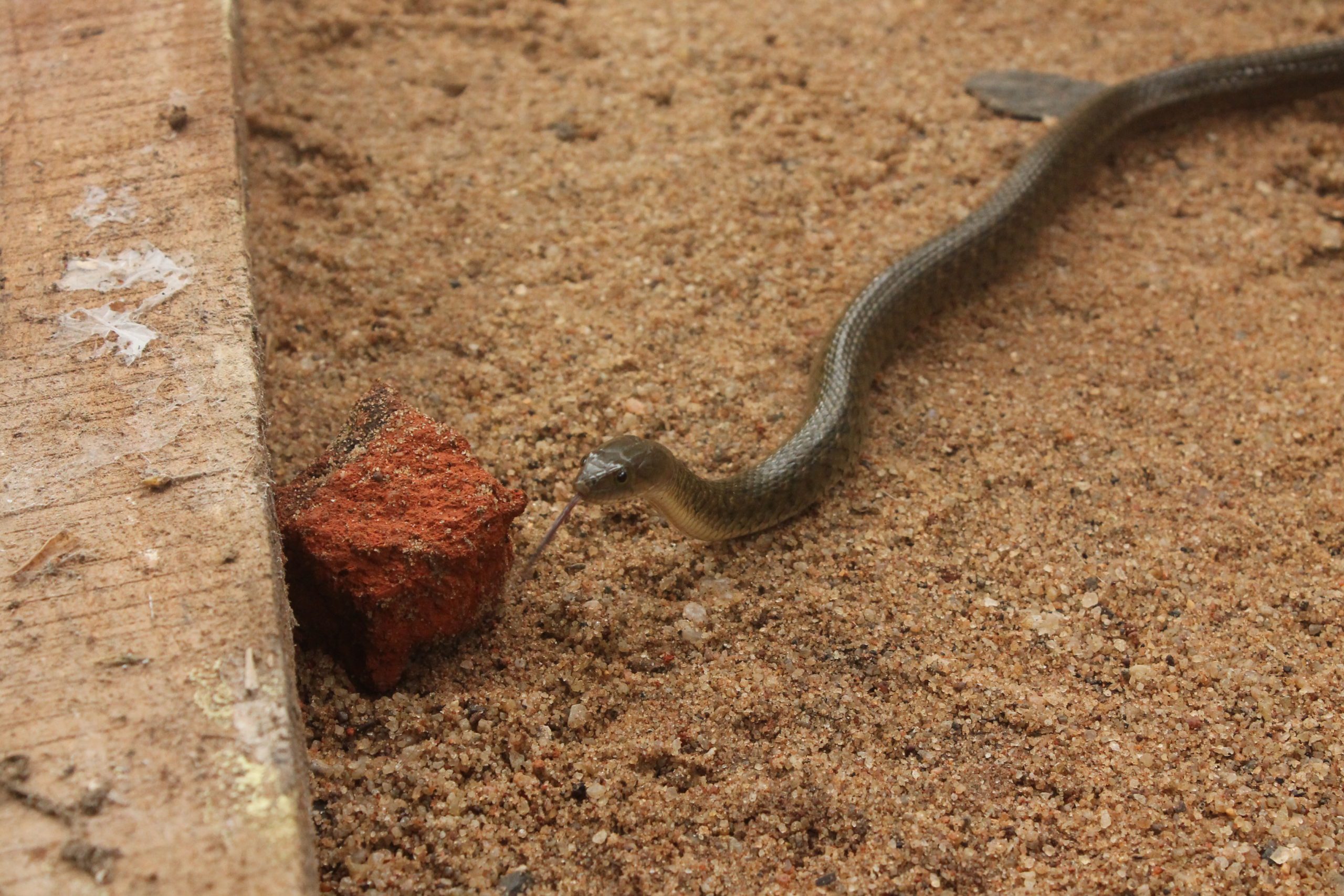
This snake is active throughout the day and night. It is very aggressive and bites in a chewing manner when handled. It will attempt to flee in a jumpy manner, revealing a lie by inflating the neck region. It can eat anything. During the monsoon, you can see them feeding on the dead frogs, and they can be found on the tar roads, which leads to more roadkill of these snakes in particular.
5. Bronze Back Tree Snake (Dendrelaphis tristis):
In Latin Greek, tristis means foul smell which is very apt for bronze back tree snake as they do have foul smell. It is one of the fastest arboreal snakes found in the country. They are active during day time. And in winter season, one can find them basking on the trees, roofs or coming out of small holes of the wall. If not disturbed they will stay at the same place and follow the same routine for going out on hunt.
When they feel threatened, sharp blue scales show up on the body which are otherwise hidden.
Venomous Snakes of India: Big 4 of Indian Snakes
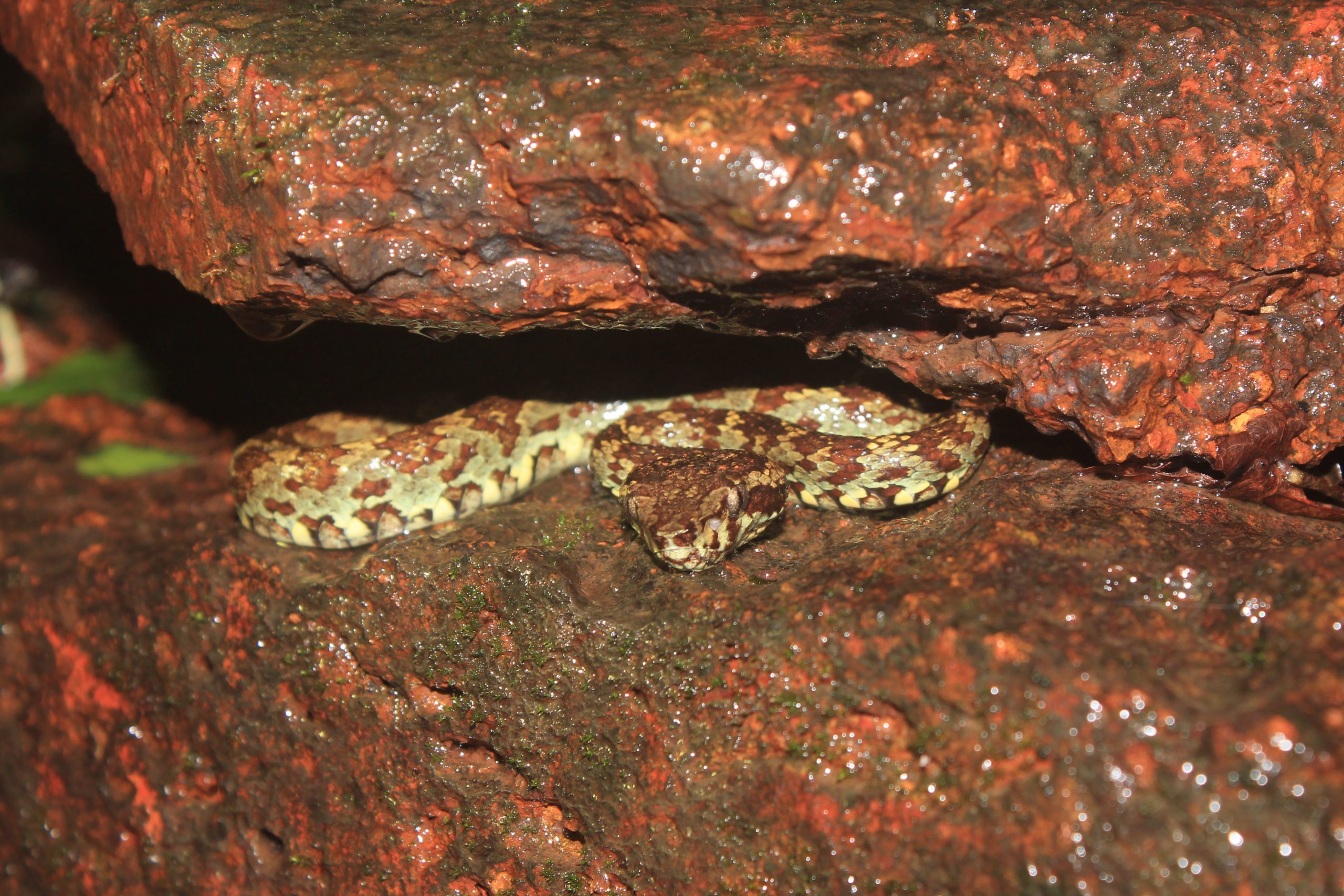
In India, we have around 60 species of snakes which are venomous and have medical importance due to fatality / toxicity of the venom. Out of these 4 are the dominant venomous snake species across the country. Their venom might not be as potent as of sea snakes, but they are responsible for the most of the snake bites in the country.
1. Russell’s Viper (Daboia russelii):
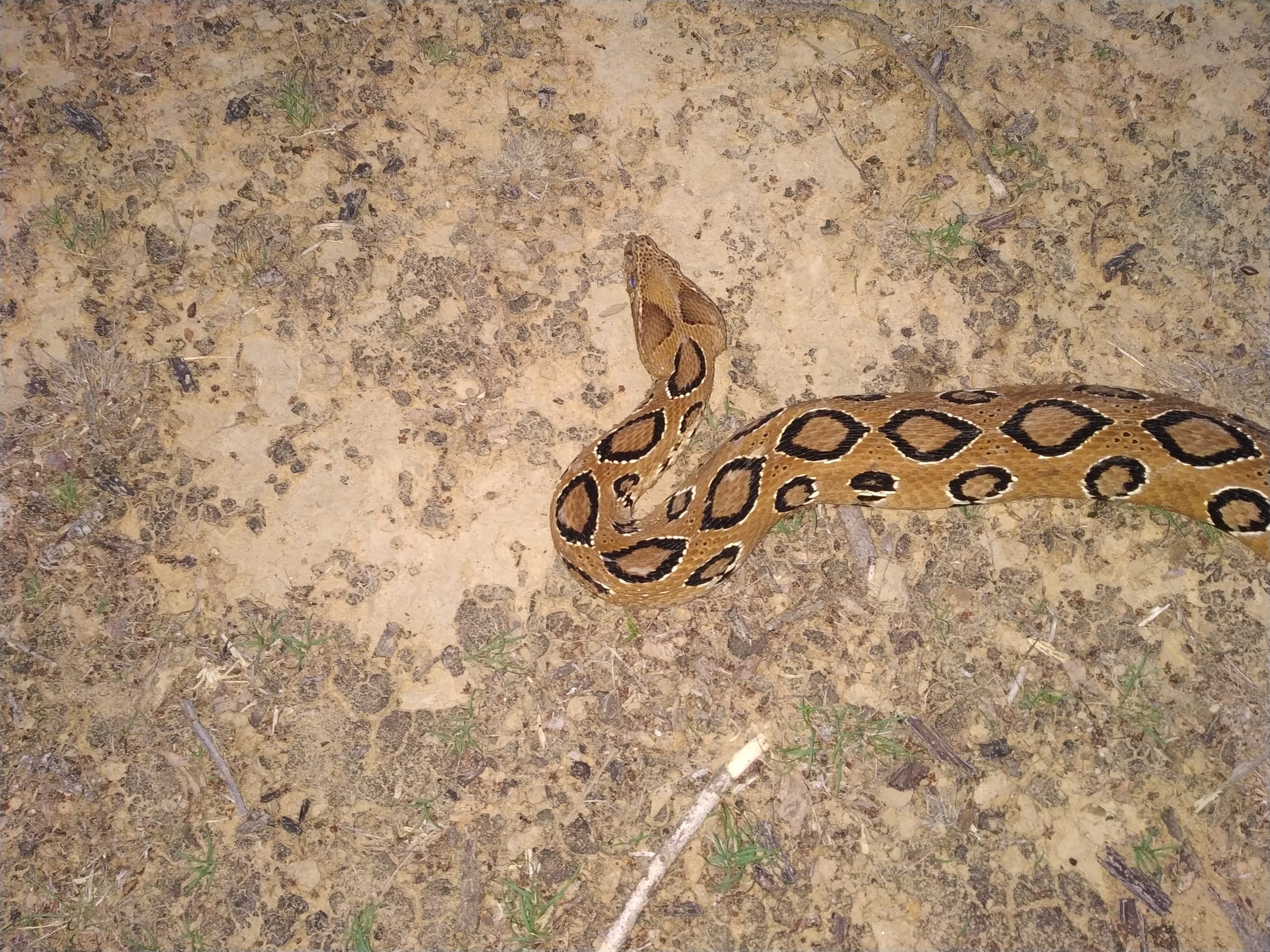
The binomial name of this snake Daboia (referring the ability to camouflage and hide well) comes from Hindi word referring to the meaning ‘hiding’; while the second part of the name i.e. russelii is in the memory of Sctottish herpetologist, Patrick Russell, who has helped explain and identify many snakes from India.
They are mainly nocturnal and are in the top list of human-snake conflict. They have the heat sensing pits just below the nostrils, which acts as an infrared vision for the snake in darkness. They have the longest fangs which can grow up to 16 mm. The Russell’s viper’s hiss is among the loudest hiss of the snakes in our country.
They have the hemotoxic venom which acts on the blood cells, tissues and muscles on the victim. The main prey of these snakes is rodents.
2. Spectacled Cobra (Naja naja):
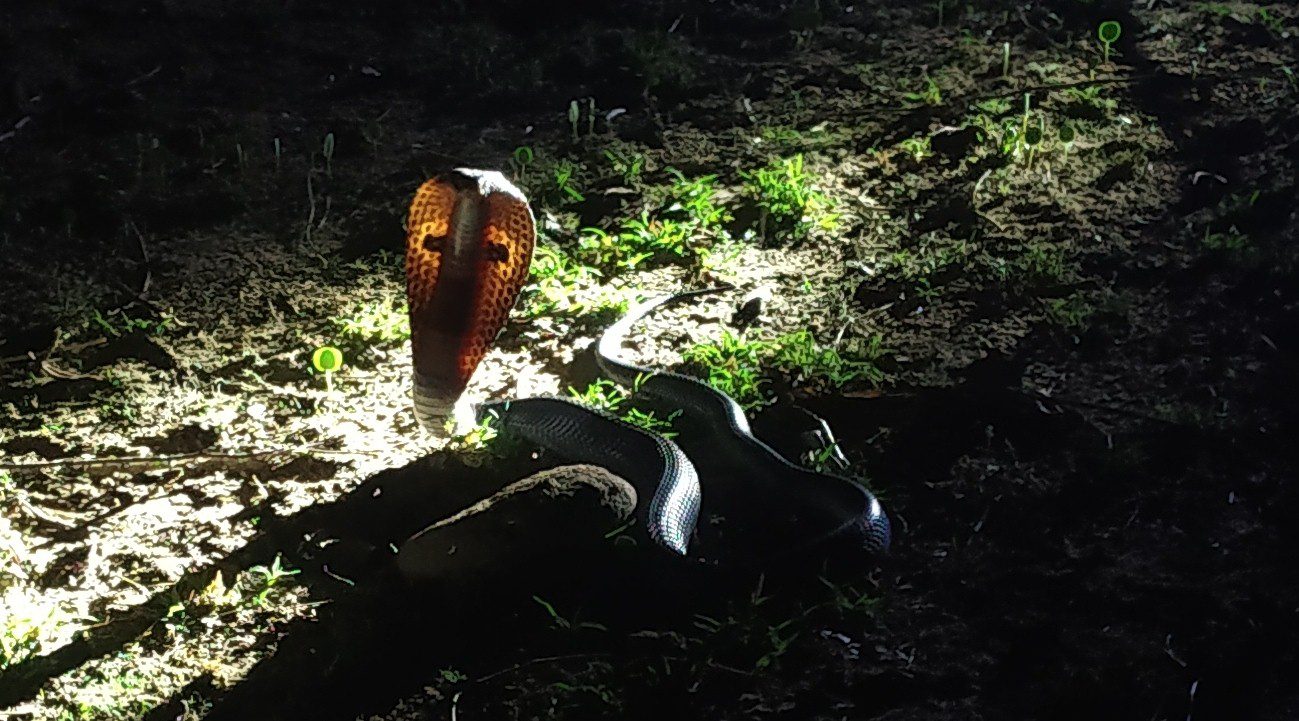
Binomial name of the cobra is derived from Naya meaning cobra in Sinhalese language. It has strong bond with many cultures and many myths are associated with them. There are few festivals are also associated with them such as Nagpanchami in India.
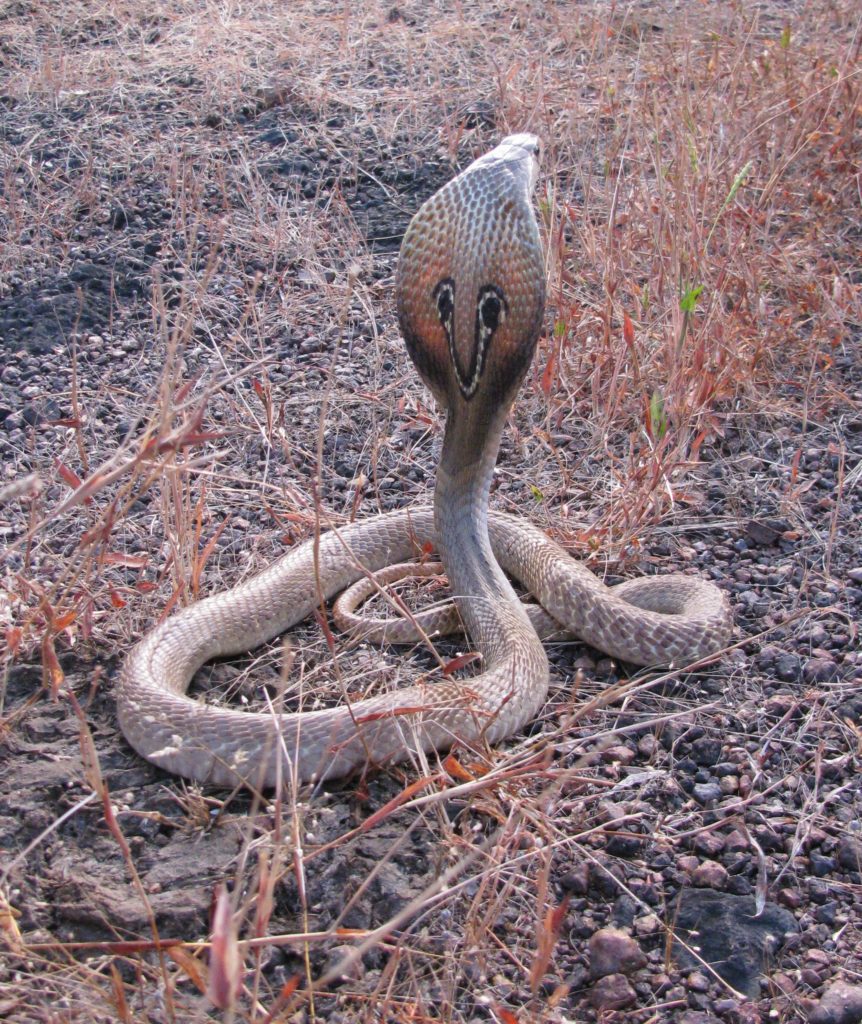
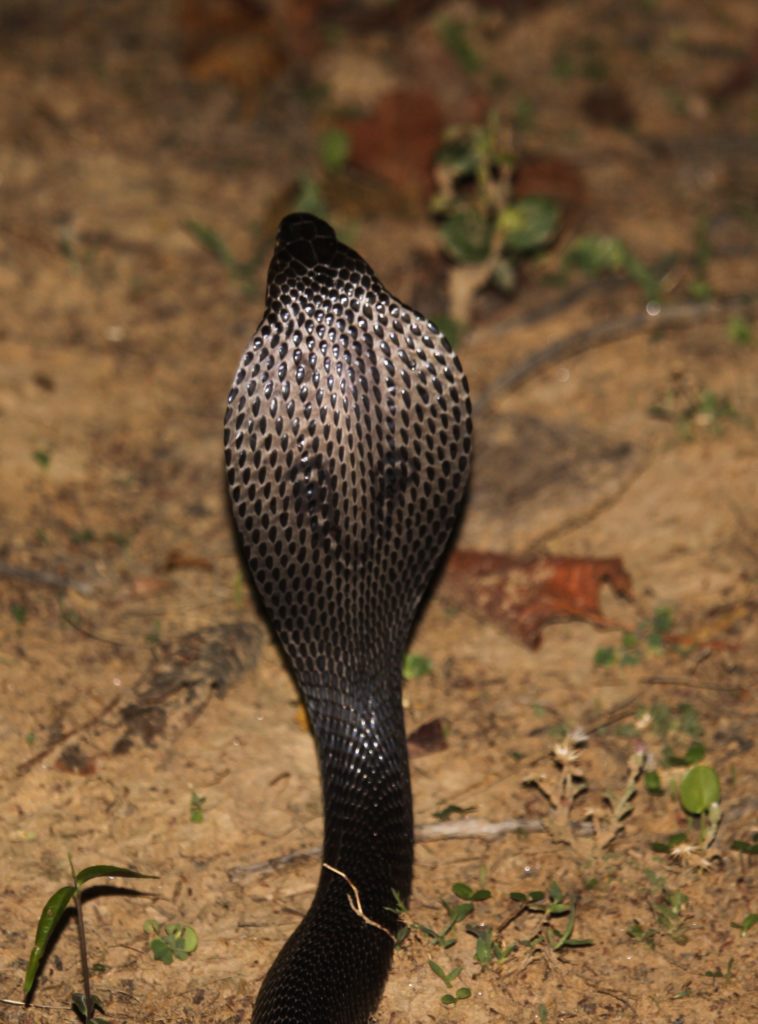
On being provoked they will lift the front part of the body up to one third of total body length. They show their hood by spreading the ribs near neck region. All the hood marks of the cobras are different just like strips on tigers. They are active during day as well as in the night.
The venom of these snakes is neurotoxic which acts on the nervous system of the victim.
3. Common Krait (Bungarus caeruleus):
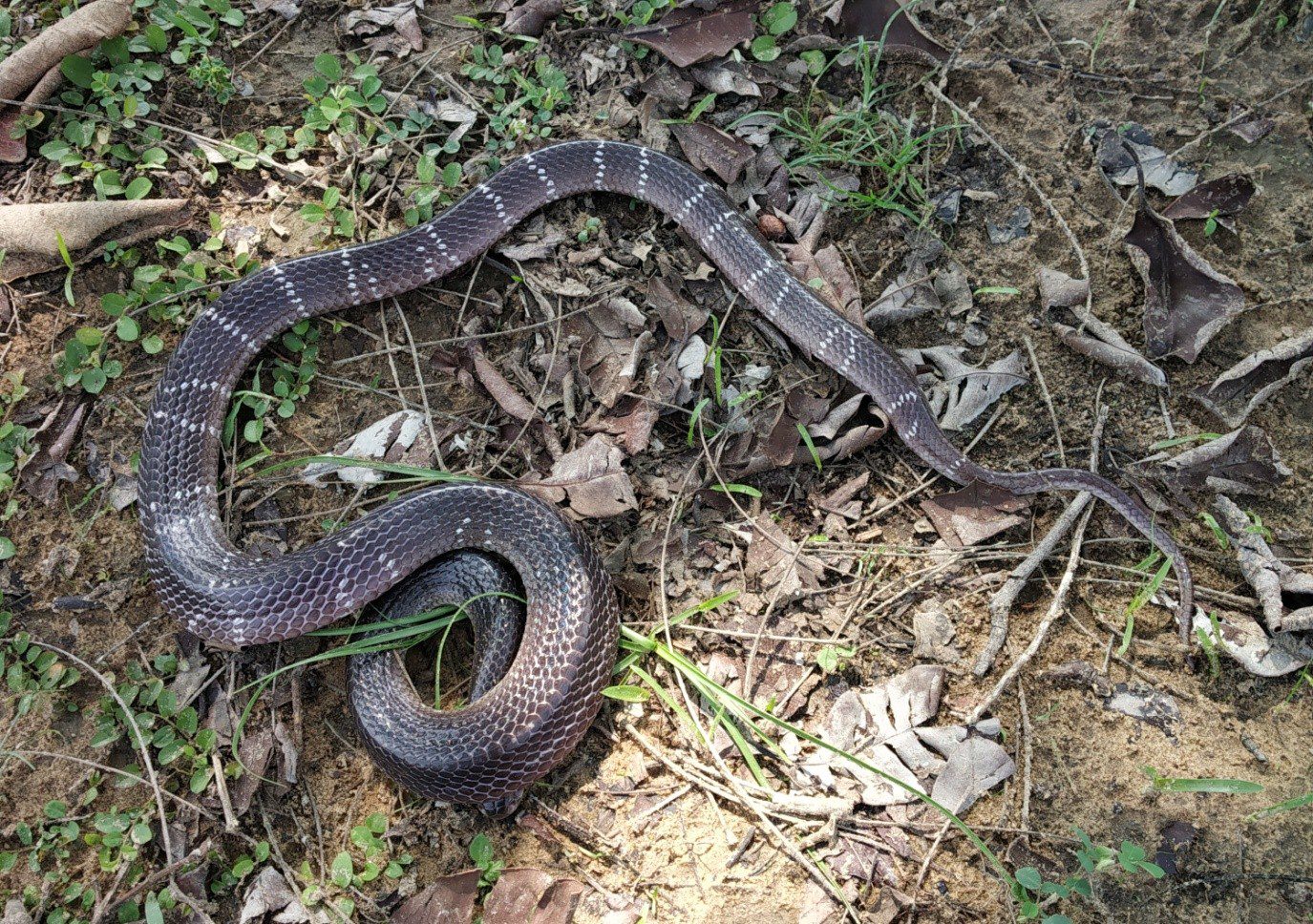
Binomial name of the Krait is derived from Telgu word ‘bangaru’ meaning krait. While caeruleus is the latin word for dark blue based on the body shine of snake.
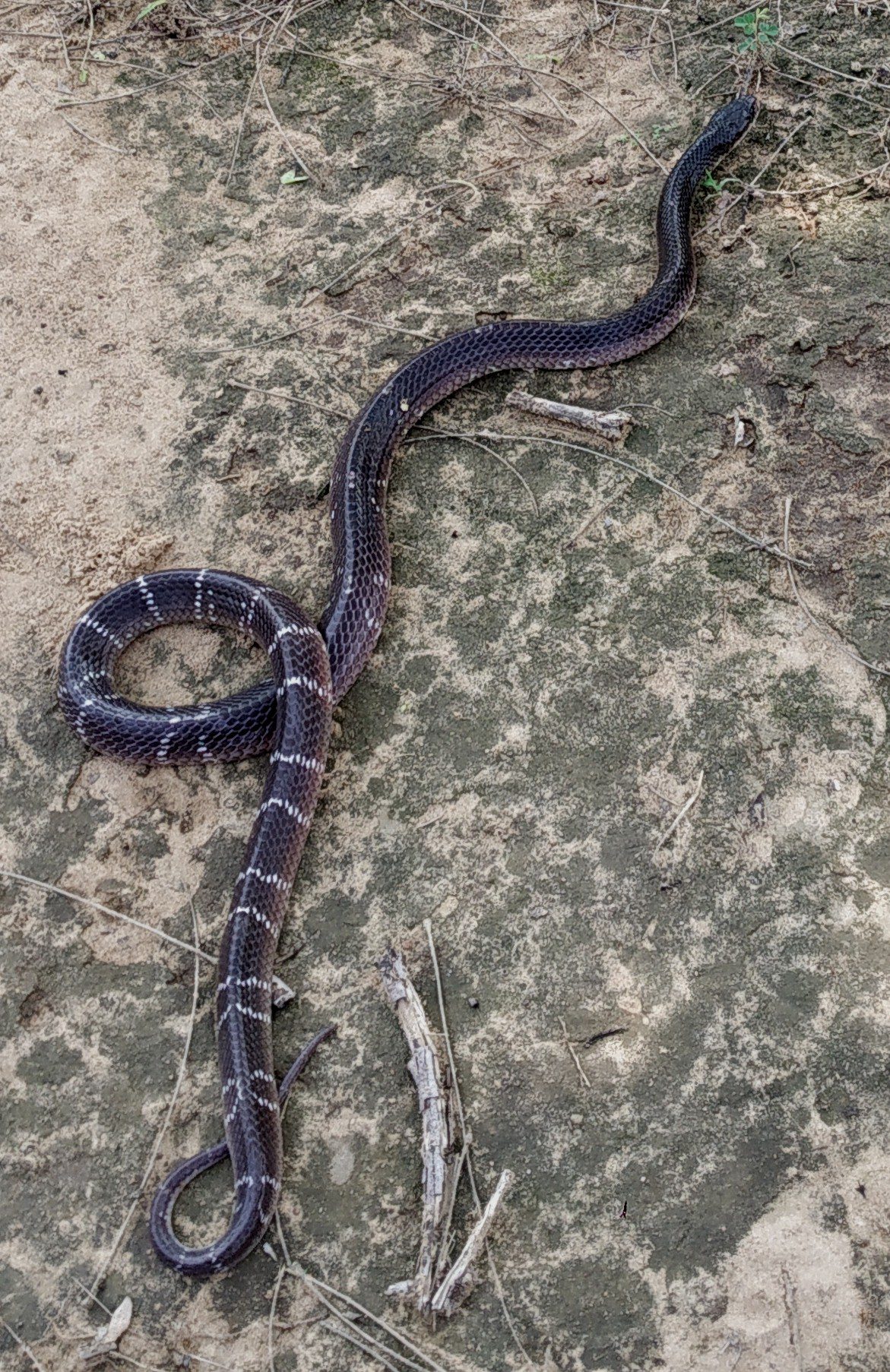
It is also nocturnal in nature and prefers to stay close to water. Kraits are very active and aggressive during night time, while on other hand during day time they are much docile. Mainly feed on other snakes, but also feed on rodents, frogs, toads etc.
The venom of this snake is neurotoxic just like cobras and acts on the nervous system of the victim.
4. Saw-scaled Viper (Echis carinatus):
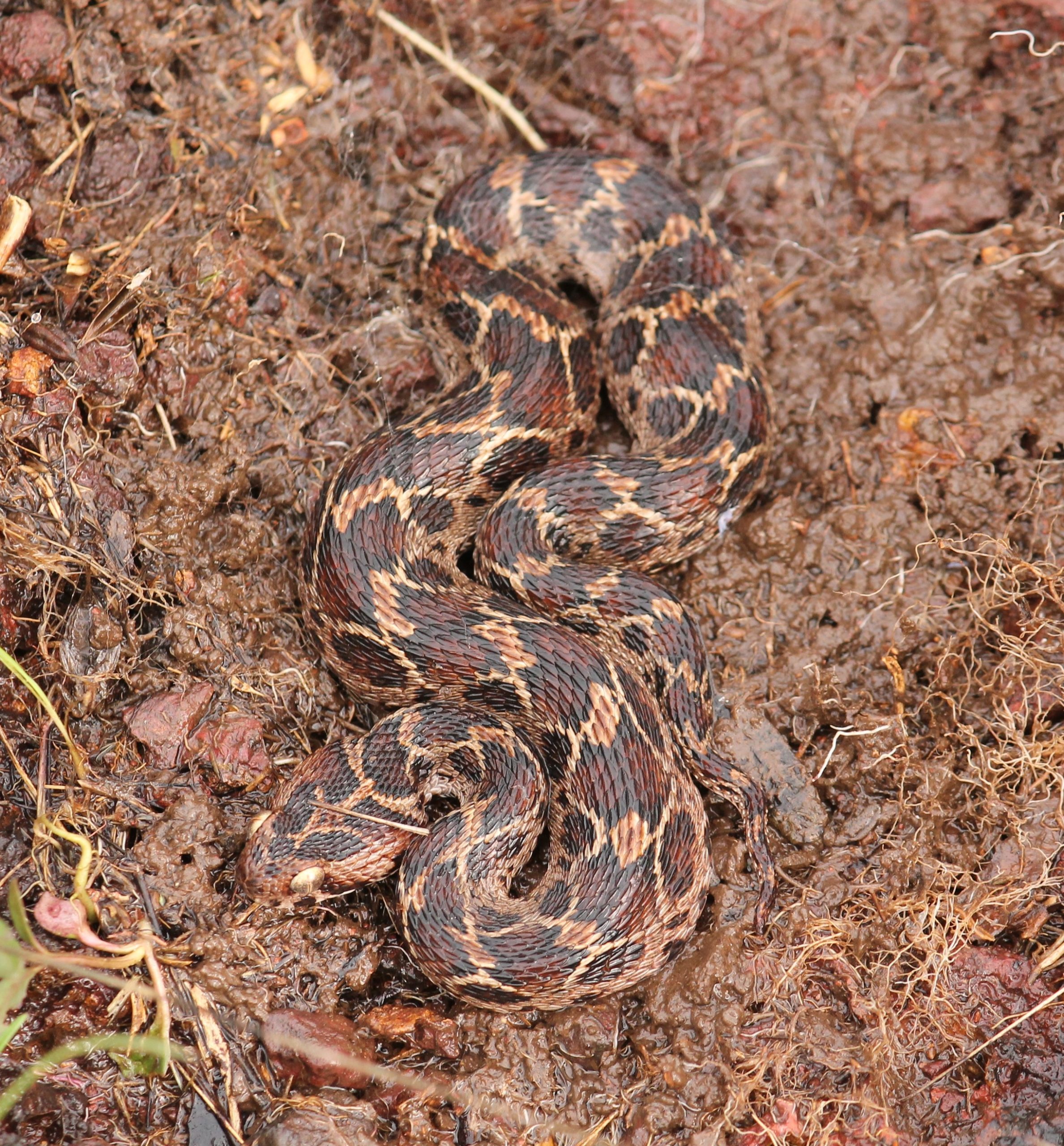
Saw-scaled viper the binomial name from the Greek word Echis which means viper and carinatus means like a keel or hull which refer to the side scales of the snake. Common name refers to raspy sound, much like tiny saw produce in the process of stimulation.
Saw-scaled vipers are nocturnal but can be seen basking during cold weather. They have the vertically elliptical pupils. And they prefer to crawl in sidewise manner. They feed on small rodents, mammals, invertebrates such as scorpions and centipede. The small size and tendency to hideaway instead of running on disturbance, increases the probability of bite during human-snake interaction.
They have hemotoxic venom just like most of the vipers.
References:
1. The Book of Indian Reptiles and Amphibians, J.C.Daniel
2. Snakes of India The Field Guide, Romulus Whitaker & Ashok Captain
3. https://www.iucnredlist.org/
4. http://reptile-database.reptarium.cz/
Visit our lodges in Kanha, Bandhavgarh, Pench, Satpura and Panna to watch various fascinating species of the forests frolic in the untamed wild. Get in touch with our trip curators at Pugdundee Safaris to book your next wildlife holiday or join our wildlife courses, PRONAT (Professional Naturalist Training) and ANAT (Amateur Naturalist Training) to learn about these amazing reptiles and much more.
Our trip curators at Pugdundee Safaris are more than happy to assist you. Phone: +91-011-40132680 Email: [email protected]
Content, Images and Videos Contributed By: Kshitij Gambhir, Manager, Denwa Backwater Escape, Pugdundee Safaris
Edited By: Natasha Sinha, Content Curator, Pugdundee Safaris

